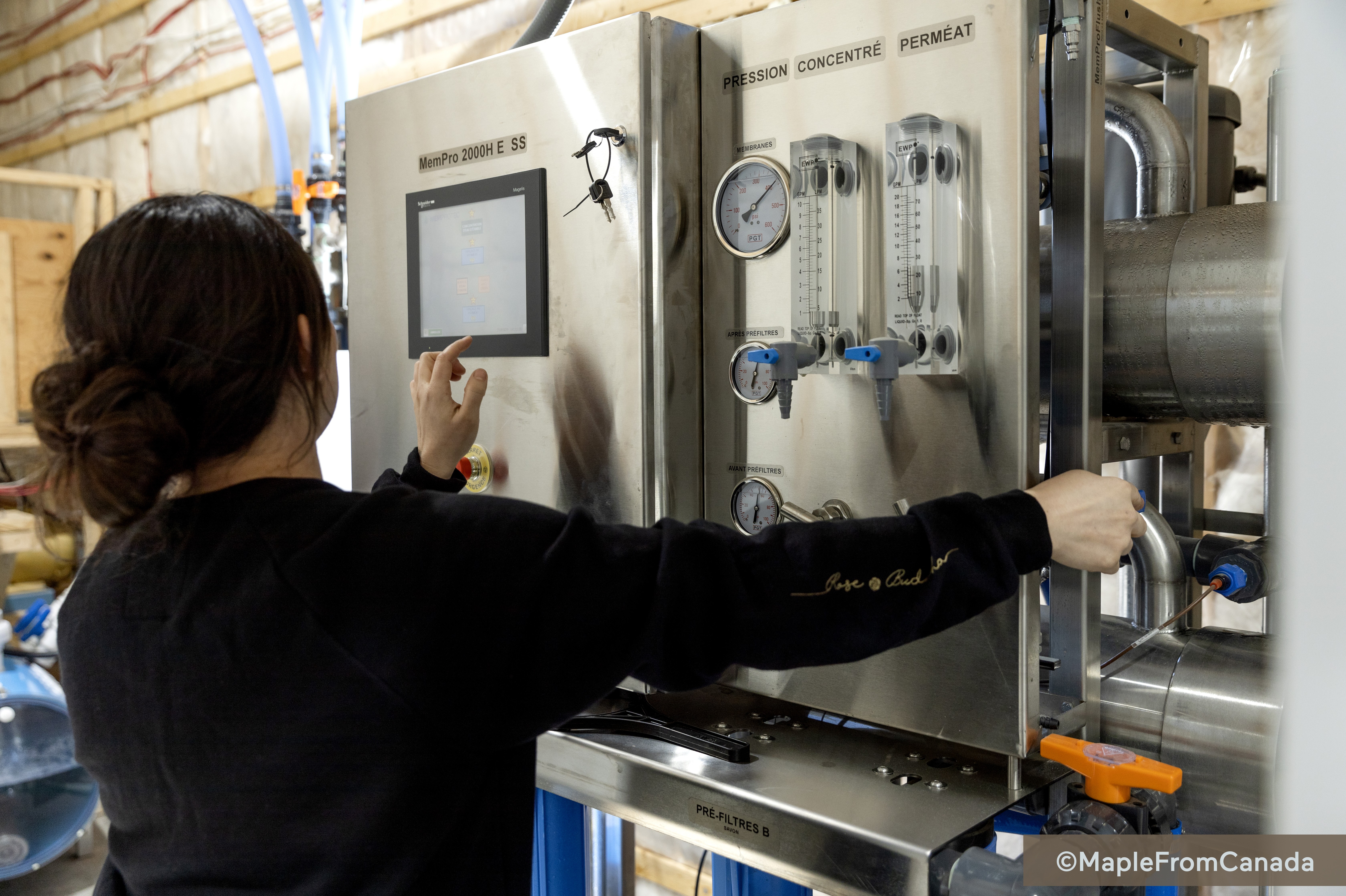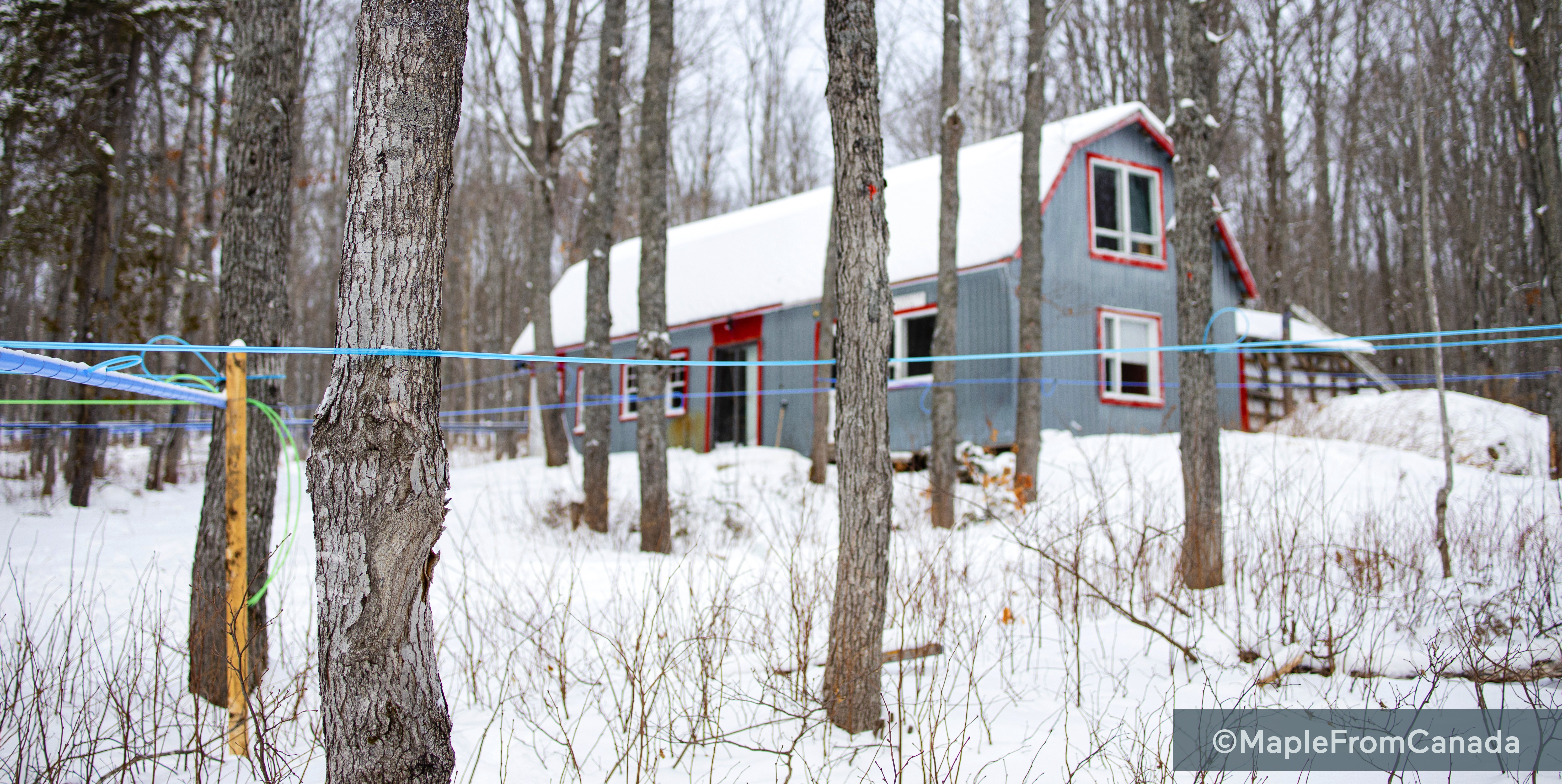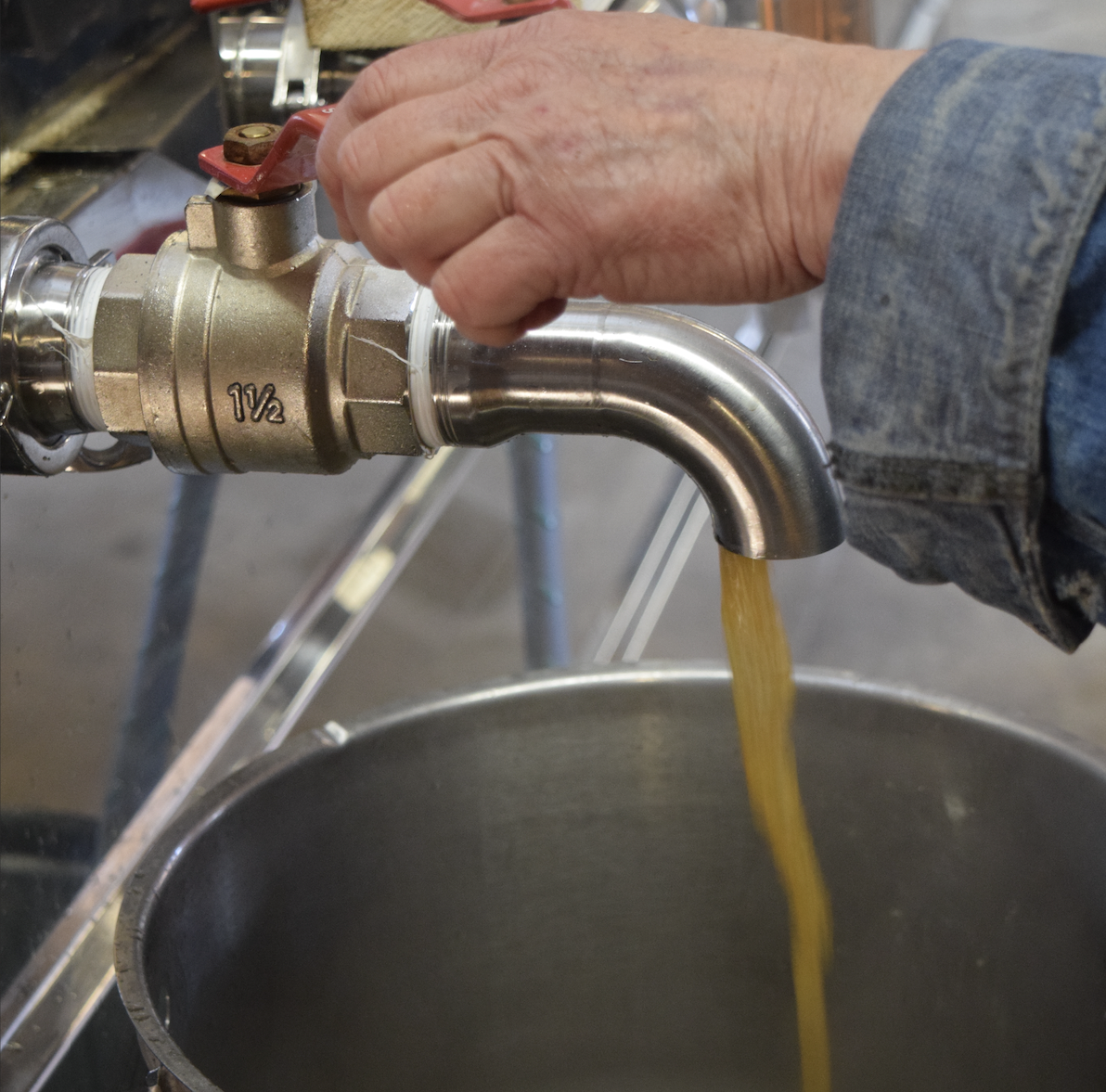
Making the Syrup
THE PROCESS
The four-step process of making maple syrup begins in the trees and ends in the sugarhouse:
-
Ongoing management of the forest for maple syrup production.
-
Tapping maple trees and collecting maple sap.
-
Reducing maple sap by a reverse osmosis process and then boiling it makes maple syrup.
-
Filtering and packaging maple syrup.

Sap Flow: A Function of Pressure
Changes in temperature generate sap flow by causing pressure to develop in the tree.
Cold nights and warm days are generally good for sugaring and the beginning and duration of this type of weather determines the sap harvest season. The timing of the harvest season varies from year to year — some years are better than others simply by having more favorable weather.
To help with sap flow, most maple producers use vacuum technology where they essentially change the atmospheric pressure at the tap, allowing more sap to run. However, the vacuum can only enhance the process and will not make sap run when it wouldn't normally.

TAPPING MAPLE TREES AND COLLECTING MAPLE SAP
In January every year, sugar makers work long days in the woods to inspect the lines and make repairs and improvements that ensure the system is ready for the sap to run.
Typically, maple producers collect sap through a system of tubing and pipeline, using gravity to get the sap into a tank that feeds directly to the sugarhouse.
In March, careful monitoring of the weather forecasts will help determine the right time to begin tapping. It’s an important decision because tapping too early will make the tap dry out and stop running prematurely, while tapping too late means missing part of the sap run. Tapping is labor-intensive with all hands in the woods, drilling a tiny hole into each tree and then tapping a spout gently into that hole.

BOILING MAPLE SAP INTO MAPLE SYRUP
Reducing the sap and boiling begins when the sap is being collected in sufficient amounts at the sugarhouse.
It takes about 40 gallons of maple sap to make one gallon of maple syrup, so a lot of water must be removed. Maple sap’s sugar content is between 1.5% and 3.0%, and finished maple syrup's sugar content is 66%.
At the final boiling stage, sap concentrates and caramelizes the sugars, producing the subtle and delicious maple flavor. Syrup is hot packed and filtered. Some syrup is packaged for retail at the sugarhouse and some is shipped in bulk drums to larger maple processing facilities for bottling and distribution.
